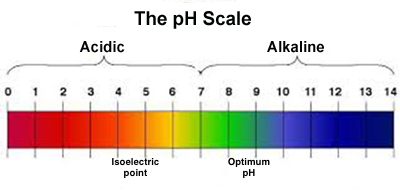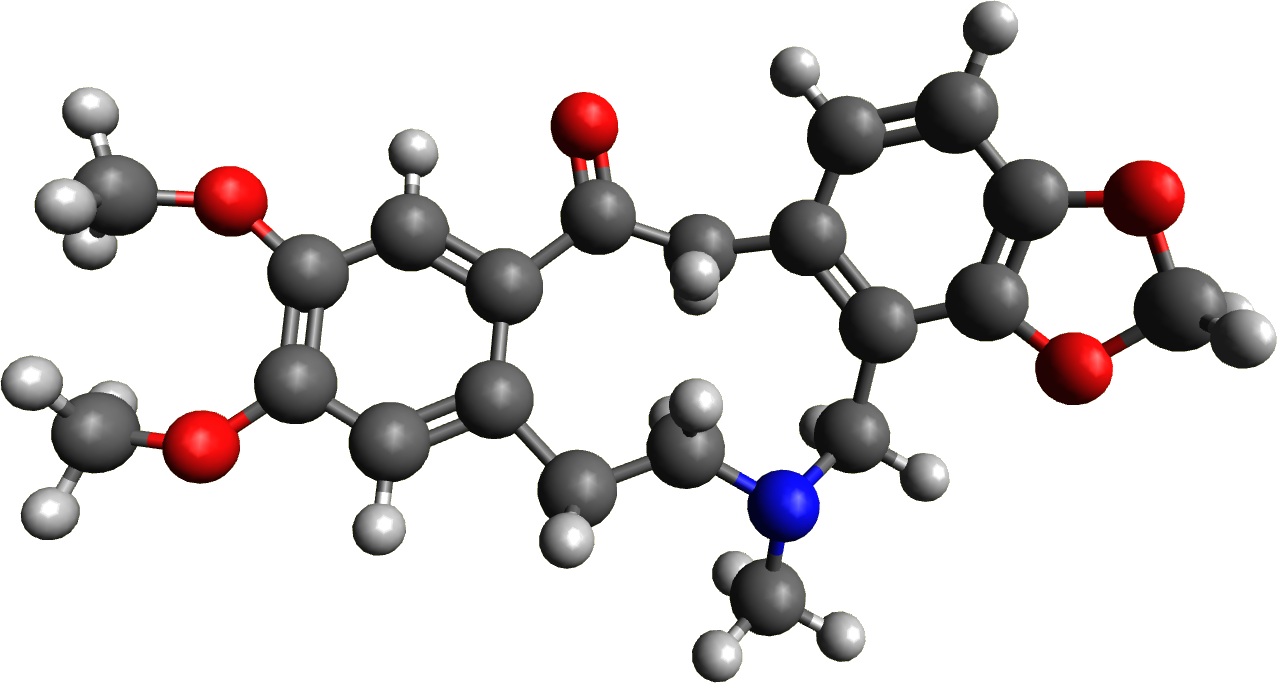|
Protopine
Protopine is an alkaloid occurring in opium poppy, ''Corydalis'' tubers and other plants of the family papaveraceae, like ''Fumaria officinalis''. Protopine is metabolically derived from the benzylisoquinoline alkaloid ''(S)''-Reticuline through a progressive series of five enzymatic transformations: 1) berberine bridge enzyme to ''(S)''-Scoulerine; 2) ''(S)-''cheilanthifoline synthase/CYP719A25 to ''(S)-''Cheilanthifoline; 3) ''(S)-''stylopine synthase/CYP719A20 to ''(S)''-Stylopine; 4) ''(S)''-tetrahydroprotoberberine ''N''-methyltransferase to ''(S)''-''cis''-''N''-Methylstylopine; and ultimately, 5) ''N''-methylstylopine hydroxylase to protopine. It has been found to inhibit histamine H1 receptors and platelet aggregation, and acts as an analgesic. See also * Protopine 6-monooxygenase * Cryptopine Cryptopine is an opium alkaloid. It is found in plants in the family Papaveraceae, including ''Argemone mexicana''. See also * Protopine * Allocryptopine References ... [...More Info...] [...Related Items...] OR: [Wikipedia] [Google] [Baidu] |
Protopine 6-monooxygenase
In enzymology, a protopine 6-monooxygenase () is an enzyme that catalyzes the chemical reaction :protopine + NADPH + H+ + O2 \rightleftharpoons 6-hydroxyprotopine + NADP+ + H2O The 4 substrates of this enzyme are protopine, NADPH, H+, and O2, whereas its 3 products are 6-hydroxyprotopine, NADP+, and H2O. This enzyme belongs to the family of oxidoreductases, specifically those acting on paired donors, with O2 as oxidant and incorporation or reduction of oxygen. The oxygen incorporated need not be derived from O2 with NADH or NADPH as one donor, and incorporation of one atom o oxygen into the other donor. The systematic name A systematic name is a name given in a systematic way to one unique group, organism, object or chemical substance, out of a specific population or collection. Systematic names are usually part of a nomenclature. A semisystematic name or semitrivial ... of this enzyme class is protopine,NADPH:oxygen oxidoreductase (6-hydroxylating). This enzyme is als ... [...More Info...] [...Related Items...] OR: [Wikipedia] [Google] [Baidu] |
Fumaria Officinalis
''Fumaria officinalis'', the common fumitory, drug fumitory or earth smoke, is a herbaceous annual flowering plant in the poppy family Papaveraceae. It is the most common species of the genus ''Fumaria'' in Western and Central Europe. Description It is an herbaceous annual plant that grows weakly erect and scrambling, with stalks about long. It has slender green leaves. Its pink flowers appear from April to October in the northern hemisphere, or May to September in the UK. They are two lipped and spurred, with sepals running a quarter the length of the petals. The plant commonly has more than 20 and up to 60 flowers per spike. The fruit is an achene containing one seed. It is approximately globular, slightly wider than high and with an apical notch. It contains alkaloids, potassium salts, and tannins and is also a source of fumaric acid. Taxonomy It was first formally described by the Swedish botanist Carl Linnaeus in his seminal publication 'Species Plantarum' on page 700, in ... [...More Info...] [...Related Items...] OR: [Wikipedia] [Google] [Baidu] |
(S)-cheilanthifoline
(''S'')-Cheilanthifoline is a benzylisoquinoline alkaloid (BIA) which has been isolated from '' Corydalis dubia'' and ''Argemone mexicana''. (''S'')-Cheilanthifoline is metabolically derived from (''S'')-reticuline, a pivotal intermediate in the biosynthesis of numerous BIAs. (''S'')-Cheilanthifoline is the immediate precursor of the BIA (''S'')-stylopine ( (''S'')-stylopine synthase/CYP719A20), which is the precursor for the alkaloids protopine and sanguinarine Sanguinarine is a polycyclic quaternary alkaloid. It is extracted from some plants, including the bloodroot plant, from whose taxonomic name, ''Sanguinaria canadensis,'' its name is drawn; the Mexican prickly poppy (''Argemone mexicana''); ''Cheli .... References Benzodioxoles Quinolizidines Heterocyclic compounds with 5 rings Methoxy compounds {{alkaloid-stub ... [...More Info...] [...Related Items...] OR: [Wikipedia] [Google] [Baidu] |
Papaveraceae
The Papaveraceae are an economically important family of about 42 genera and approximately 775 known species of flowering plants in the order Ranunculales, informally known as the poppy family. The family is cosmopolitan, occurring in temperate and subtropical climates (mostly in the northern hemisphere), but almost unknown in the tropics. Most are herbaceous plants, but a few are shrubs and small trees. The family currently includes two groups that have been considered to be separate families: Fumariaceae and Pteridophyllaceae. Description The plants may be annual, biennial, or perennial. Usually herbaceous, a few species form shrubs or evergreen trees. They are lactiferous, producing latex, which may be milky or watery, coloured or plain. All parts contain a well-developed duct system (these ducts are called "laticifers"), producing a milky latex, a watery white, yellow or red juice. The simple leaves are alternate or sometimes whorled. They have petioles and are not enc ... [...More Info...] [...Related Items...] OR: [Wikipedia] [Google] [Baidu] |
BBE-like Enzymes
Berberine bridge enzyme-like (BBE-like enzymes) form a subgroup of the superfamily of FAD-linked oxidases (SCOPe d.58.32), structurally characterized by a typical fold observed initially for vanillyl-alcohol oxidase (VAO). This proteins are part of a multigene family (PF08031) that can be found in plants, fungi and bacteria. BBE-like enzymes family form a large subgroup that have a special C-terminal structural element adjacent to the substrate binding region. An homonym of this family is the (S)-reticuline oxidase or berberine bridge enzyme from California poppy (''Eschscholzia californica''), the responsible of catalyzing the conversion of (S)-reticuline to (S)-scoulerine. This conversion is made by an oxidative ring closure reaction. The product of this reaction is the C-C bond and is referred to as the berberine bridge. Also, marks a branch point in the biosynthesis of benzylisoquinoline alkaloids. As mentioned above, BBE-like enzymes are in the large family of FAD-linked oxi ... [...More Info...] [...Related Items...] OR: [Wikipedia] [Google] [Baidu] |
Scoulerine
Scoulerine, also known as discretamine and aequaline, is a benzylisoquinoline alkaloid (BIA) that is derived directly from (''S'')-reticuline through the action of berberine bridge enzyme. It is a precursor of other BIAs, notably berberine, noscapine, (''S'')- tetrahydropalmatine, and (''S'')-stylopine, as well as the alkaloids protopine, and sanguinarine. It is found in many plants, including opium poppy, ''Croton flavens'', and certain plants in the genus '' Erythrina''. Studies show that scoulerine is an antagonist ''in vitro'' at the α2-adrenoceptor, α1D-adrenoceptor and 5-HT receptor 5-HT receptors, 5-hydroxytryptamine receptors, or serotonin receptors, are a group of G protein-coupled receptor and ligand-gated ion channels found in the central and peripheral nervous systems. They mediate both excitatory and inhibitory ne .... It has also been found to be a GABAA receptor agonist ''in vitro''. References {{reflist Isoquinolinoisoquinolines Natural opium al ... [...More Info...] [...Related Items...] OR: [Wikipedia] [Google] [Baidu] |
Platelet Aggregation
Platelets, also called thrombocytes (from Greek θρόμβος, "clot" and κύτος, "cell"), are a component of blood whose function (along with the coagulation factors) is to react to bleeding from blood vessel injury by clumping, thereby initiating a blood clot. Platelets have no cell nucleus; they are fragments of cytoplasm that are derived from the megakaryocytes of the bone marrow or lung, which then enter the circulation. Platelets are found only in mammals, whereas in other vertebrates (e.g. birds, amphibians), thrombocytes circulate as intact mononuclear cells. One major function of platelets is to contribute to hemostasis: the process of stopping bleeding at the site of interrupted endothelium. They gather at the site and, unless the interruption is physically too large, they plug the hole. First, platelets attach to substances outside the interrupted endothelium: ''adhesion''. Second, they change shape, turn on receptors and secrete chemical messengers: ''activation ... [...More Info...] [...Related Items...] OR: [Wikipedia] [Google] [Baidu] |
Natural Opium Alkaloids
Nature, in the broadest sense, is the physics, physical world or universe. "Nature" can refer to the phenomenon, phenomena of the physical world, and also to life in general. The study of nature is a large, if not the only, part of science. Although humans are part of nature, human activity is often understood as a separate category from other natural phenomena. The word ''nature'' is borrowed from the Old French ''nature'' and is derived from the Latin word ''natura'', or "essential qualities, innate disposition", and in ancient times, literally meant "birth". In ancient philosophy, ''natura'' is mostly used as the Latin translation of the Greek word ''physis'' (φύσις), which originally related to the intrinsic characteristics of plants, animals, and other features of the world to develop of their own accord. The concept of nature as a whole, the physical universe, is one of several expansions of the original notion; it began with certain core applications of the word � ... [...More Info...] [...Related Items...] OR: [Wikipedia] [Google] [Baidu] |
Cryptopine
Cryptopine is an opium alkaloid. It is found in plants in the family Papaveraceae, including ''Argemone mexicana''. See also * Protopine * Allocryptopine References {{Components of Opium Natural opium alkaloids Alkaloids found in Papaveraceae Benzodioxoles Alkaloids ... [...More Info...] [...Related Items...] OR: [Wikipedia] [Google] [Baidu] |
Analgesic
An analgesic drug, also called simply an analgesic (American English), analgaesic (British English), pain reliever, or painkiller, is any member of the group of drugs used to achieve relief from pain (that is, analgesia or pain management). It is typically used to induce cooperation with a medical procedure. Analgesics are conceptually distinct from anesthetics, which temporarily reduce, and in some instances eliminate, sensation, although analgesia and anesthesia are neurophysiologically overlapping and thus various drugs have both analgesic and anesthetic effects. Analgesic choice is also determined by the type of pain: For neuropathic pain, traditional analgesics are less effective, and there is often benefit from classes of drugs that are not normally considered analgesics, such as tricyclic antidepressants and anticonvulsants. Various analgesics, such as many NSAIDs, are available over the counter in most countries, whereas various others are prescription drugs owing ... [...More Info...] [...Related Items...] OR: [Wikipedia] [Google] [Baidu] |
Chloroform
Chloroform, or trichloromethane, is an organic compound with chemical formula, formula Carbon, CHydrogen, HChlorine, Cl3 and a common organic solvent. It is a colorless, strong-smelling, dense liquid produced on a large scale as a precursor to PTFE. It is also a precursor to various refrigerants. It is trihalomethane. It is a powerful anesthetic, euphoriant, anxiolytic, and sedative when inhaled or ingested. Structure The molecule adopts a tetrahedral molecular geometry with C3v symmetry group, symmetry. Natural occurrence The total global flux of chloroform through the environment is approximately tonnes per year, and about 90% of emissions are natural in origin. Many kinds of seaweed produce chloroform, and fungi are believed to produce chloroform in soil. Abiotic processes are also believed to contribute to natural chloroform productions in soils although the mechanism is still unclear. Chloroform volatilizes readily from soil and surface water and undergoes degradation in ... [...More Info...] [...Related Items...] OR: [Wikipedia] [Google] [Baidu] |
_Fumaria_officinalis_-_Plant_habit.jpg)


.jpg)


